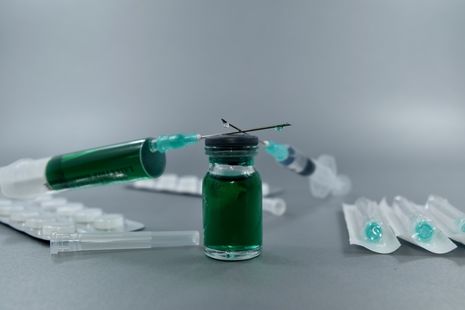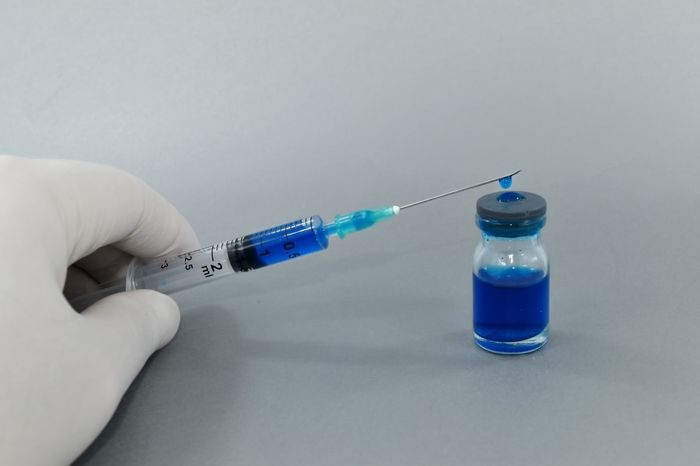A possible gamechanger – the record-breaking mRNA vaccine that could help us end the COVID-19 pandemic
Eilidh Rivers breaks down the mechanisms by which new mRNA viruses work, and discusses their efficacy and safety.

Following the approval of the Pfizer-BioNTech vaccine at the start of December, vaccinations against COVID-19 have begun in the UK. This is not only an important step towards the end of the pandemic, but it is also a scientific milestone, as this vaccine is the first mRNA vaccine to be approved anywhere in the world. The Moderna vaccine, which uses the same technology, has already been approved in the US and is set to be approved for use in the UK in the coming weeks. Thanks to the hard work of many scientists and medical practitioners, these vaccines have been developed in record time, but that does not mean they are unsafe.
“Thanks to the hard work of many scientists and medical practitioners, these vaccines have been developed in record time, but that does not mean they are unsafe”
mRNA is a molecule found in most cells. Cells have a DNA genome that contains all the information they need to carry out their functions, including how to make proteins. However, proteins are made in a different part of the cell to where DNA is stored. This is where mRNA comes in - it is a messenger that acts as a “copy” of DNA, made by a process called transcription, that carries the necessary information to the ribosomes, molecular machines that convert it into proteins. This whole process leaves the DNA itself unchanged.
mRNA vaccines contain mRNA molecules that cells can use to make a specific coronavirus protein called the spike protein. This is the protein on the outside of virus particles that helps the virus bind to and infect cells, but by itself it is harmless. When you are vaccinated, your cells use the mRNA to make the spike protein. They then display the protein on their own surfaces. Cells of the immune system will react to the spike protein by making lots of antibodies. These antibodies and the special cells which make them (called B cells), stay around in the body, so if you are exposed to coronavirus after vaccination the antibodies are already there, and can quickly defend against the virus before you become ill. A second dose of the vaccine is given so that the body is more practiced at defending against the virus.
To make the vaccine, the mRNA is packaged into lipid nanoparticles (made of molecules of fat) so that it can enter cells. Some mRNA vaccines have extra sequences that enable the mRNA to self-replicate to make more copies, leading to the production of more spike protein and a larger immune response. Some also have adjuvants, molecules that are commonly added to vaccines to help increase the immune response even more.
mRNA vaccines appear quite simple, but they are new to the vaccine scene because they require an in-depth understanding of cellular workings to make – understanding that we only started to make sense of 60 years ago. Recent discoveries that make mRNA vaccines possible, many pioneered by the Hungarian-American scientist Katalin Kariko, include slight chemical changes to the RNA that prevent the body from responding to the mRNA with inflammation, which could cause damage to our own tissues and cells. Other developments include improvements to the design of the sequences at the ends of the mRNA molecules to help make sure the mRNA remains in cells long enough and that lots of protein is made, as well as better purification strategies to increase safety.
“mRNA vaccines appear quite simple, but they are new to the vaccine scene because they require an in-depth understanding of cellular workings to make”
Key characteristics of mRNA also help explain why these vaccines are safe. Firstly, mRNA is naturally broken down by cells to help control the production of protein. This means that the mRNA in the vaccine will also be broken down and leave no trace inside cells. Also, mRNA cannot be converted into DNA inside normal human cells due to the lack of a certain enzyme and so the risk of integration into the genome is incredibly low. Furthermore, the vaccine does not actually contain coronavirus or any other virus. Unlike early vaccines made by treating a virus until it is no longer harmful (a process called serial passage), the creation of this new type of vaccine does not directly involve coronavirus at any point, as only the genome sequence is needed. Additionally, the manufacturing steps also do not involve cells or viruses, reducing the risk of contamination.
The speedy development of COVID-19 vaccines understandably makes many concerned that they are not as safe as they should be. However, these vaccines have still met rigorous safety standards – the fast development is just the fortunate result of many years of work coming together at the right time.
Firstly, although mRNA vaccines have not been approved before, they’ve been a long time in the making. mRNA vaccines were first shown to be a possibility in 1990 but research has mostly been focused on their potential use against cancer as they struggled to compete with more established vaccine technologies. Additionally, studies on other coronaviruses such as SARS and MERS laid the groundwork for COVID-19 work, for example, these studies identified that the spike protein would be a good antibody target.
Secondly, mRNA vaccines are faster than more traditional types of vaccine to manufacture and design – all that is needed is the genomic sequence (which was shared in January 2020). Finally, the issues that often delay vaccine clinical trials were avoided. There were many people keen to get involved so it was easy to recruit participants, the high prevalence of the virus in many countries meant that the participants were exposed to the virus, and the large worldwide impact of the virus made it easy to obtain funding.
Additionally, the phases of the clinical trials were overlapped, with Phase 3 (large scale trials) beginning before the completion of Phase 2, further accelerating the process. This is not uncommon and is acceptable because the very first clinical trials demonstrate general safety in humans. The Medicines and Healthcare products Regulatory Agency (MHRA), the body that approves the vaccine in the UK, reviewed the data on a rolling basis so the final approval was a faster process, but not an unconsidered one. Participants in the trials were monitored for months after vaccination and Phase 4 monitoring will continue as the vaccine is rolled out to assess potential long-term effects, but as most side-effects of vaccines occur soon after vaccination, it is unlikely that serious long-term effects will be seen. Recently, there has been alarm over reactions to the Moderna mRNA vaccine in patients with dermal fillers. However, similar reactions have been seen after many natural infections, and all such events in the trials were resolved upon treatment.
Overall, mRNA vaccines are safe, efficacious, and a stunning example of what science can achieve when fully supported. However, vaccination does not give everyone complete immunity, and we know little about whether it can prevent asymptomatic transmission. For now, vaccination does not grant exemption from restrictions, and we can expect precautions like masks and social distancing for a while longer.
 Comment / Plastic pubs: the problem with Cambridge alehouses 5 January 2026
Comment / Plastic pubs: the problem with Cambridge alehouses 5 January 2026 News / Cambridge businesses concerned infrastructure delays will hurt growth5 January 2026
News / Cambridge businesses concerned infrastructure delays will hurt growth5 January 2026 News / New movement ‘Cambridge is Chopped’ launched to fight against hate crime7 January 2026
News / New movement ‘Cambridge is Chopped’ launched to fight against hate crime7 January 2026 News / AstraZeneca sues for £32 million over faulty construction at Cambridge Campus31 December 2025
News / AstraZeneca sues for £32 million over faulty construction at Cambridge Campus31 December 2025 Interviews / You don’t need to peak at Cambridge, says Robin Harding31 December 2025
Interviews / You don’t need to peak at Cambridge, says Robin Harding31 December 2025










